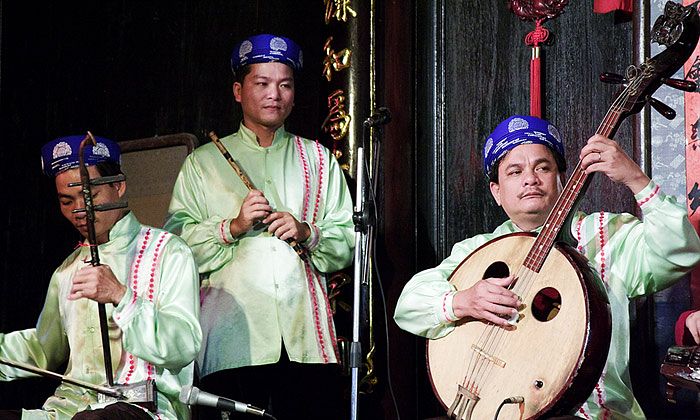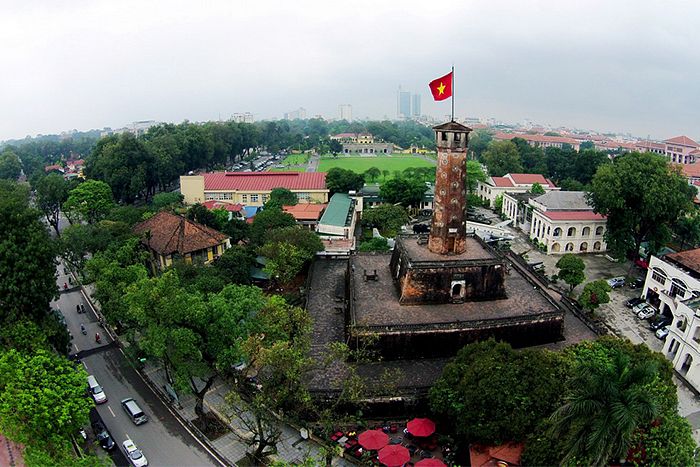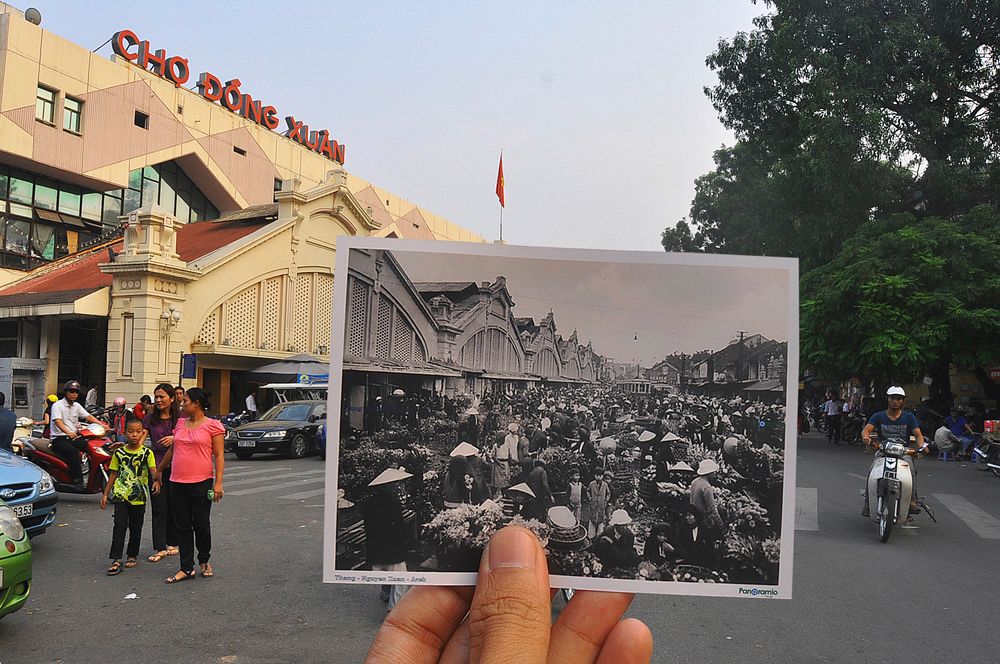Against the backdrop of Vietnamese gender sensitivities that are based on a feudally influenced culture, it is ironic that one of the country’s most unique dances, one that is over 1,000 years old, is an example of the subconscious existence and acceptance of gender-bending.
Traced back to the reign of King Phung Hung’s (761 – 802), the dance took shape in a military camp where there were no women due to male priority tradition. To address the serious gender skew, King Phung Hung had some men dress up as women to entertain his soldiers.
The site of the ancient military camp has since become a – Trieu Khuc – and has preserved the dance to this very day.

Photo via xomnhiepanh
Only physically and mentally qualified males are selected – those with a slender build, a presentable appearance, respectful behavior and a good education. The guys dress up in a rural northern gown (áo mớ ba mớ bảy), wear bright make-up and perform an elegant, yet flirtatious dance consisting of swift limb movements while playing a small drum hanging in front of them.

Photo via Zing News.
The dance has not only become eye-catching for its flamboyance, but also its somewhat shocking name – con đĩ đánh bồng (“con đĩ” means “a whore” but it means more likely a flirtatious woman in this context).

Beneath all the colorful make-up and ostentatiously effeminate gestures may lie insecurity and fear of social exclusion for taking on a role of the opposite sex.
So why do they keep doing this dance? Perhaps it is the excitement of the audience and more than that, the bravery and pride to perpetuate an ancient cultural vestige threatened by modernization which seems to push traditional values into oblivion.














